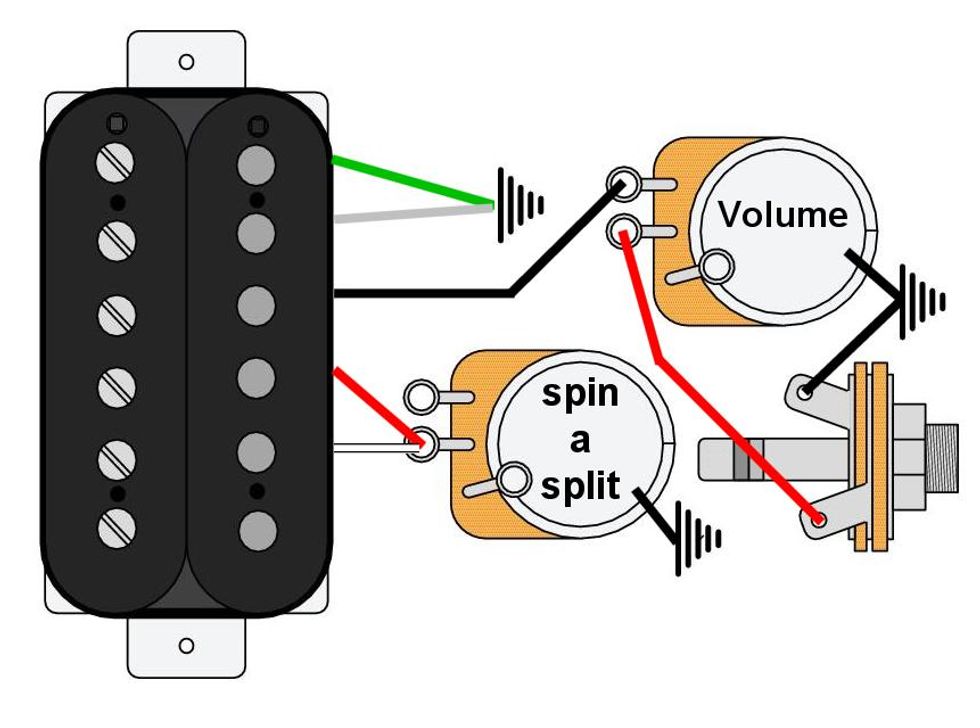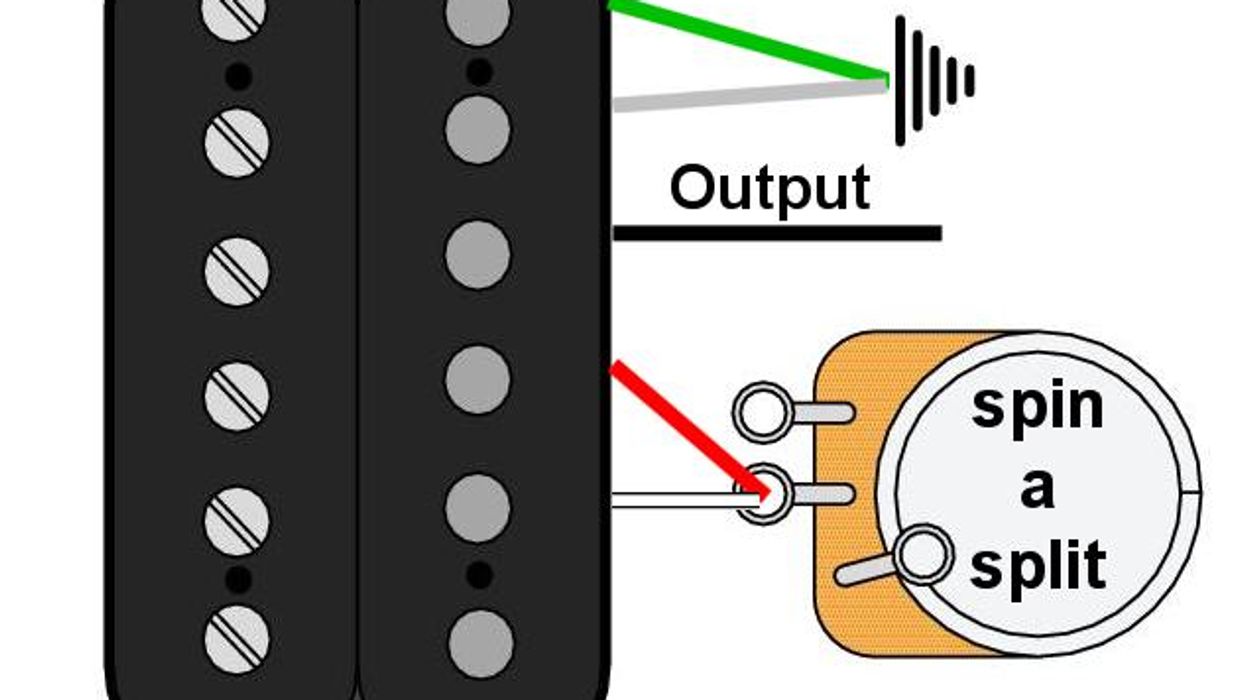Hello and welcome back to Mod Garage. As a follow-up to the “Tapping and Splitting: What’s the Difference?” column in the October 2021 issue, this month we’ll take a closer look at variable splitting of humbuckers that’s also known as the “spin-a-split” mod. This mod can be applied to all humbuckers with a 4-conductor wiring because we need access to the start and end of both coils. You can’t do this mod to humbucker pickups with a standard 2-conductor wiring. Most humbuckers can be converted from 2-conductor to 4-conductor wiring; however, you need to open the pickup for this, which can be a delicate job. That job is best left to a guitar tech, because destroying the pickup is easy to do.
The basic idea of this mod is very simple. With a switch, you can split the humbucker to a single-coil pickup resulting in two very different tones: 100 percent humbucker or 100 percent single-coil. The variable coil-splitting mod uses a pot instead of a switch, so you don’t have only two given tones but also anything in between, giving you precise control over the amount of split.
This is not just about balancing tone, but also balancing hum-free operation. The more humbucker you have, the less hum and noise will be present and vice versa. With the pot fully opened you have 100 percent humbucker, and with the pot fully closed you have 100 percent single-coil. But it’s easy to dial in any tone you want, for example, 70 percent humbucker plus 30 percent single-coil, which gives a good proportion of hum-free operation.
Another cool bonus is that when you have too much bass or overdrive in full humbucker mode, you can use the spin-a-split to instantly clear things up.
So, you’ll have easy access to a huge range of tones from only one humbucker pickup by mixing single-coil and humbucker sounds. You can also mimic other pickups with this mod, such as P-90s or Filter’Trons. Another cool bonus is that when you have too much bass or overdrive in full humbucker mode, you can use the spin-a-split to instantly clear things up.
The idea is not new. It first showed up in the mid 1970s and Hartley Peavey is the person to whom all the credit must go. Most people think this is an easy mod, which only partly hits the nail, and I’ll explain why in just a moment.
Let’s have a look at the basic configuration and how this mod works (Fig. 1). You need a spin-a-split pot for each humbucker pickup you want to install this wiring into. As usual, I chose the Seymour Duncan color code to demonstrate the mod because it’s the quasi-standard in the guitar world. If you want to transfer the color code to humbucker pickups from another company, you can use one of the many color code transfer charts on the internet.
As usual, the green and the bare wires go to ground so there’s nothing new here. The black wire is the output, going to a pickup-selector switch or to the input lug of a volume control. The red and the white wires are going to the middle lug (lug #2) of the spin-a-split pot while the bottom lug (lug #3) is grounded. When the pot is turned all the way down, the red and white wires will be connected directly to ground, which is a normal coil-split setup for single-coil tone. When the control is turned all the way up, the red and white wires are not connected to ground at all, which means normal humbucker mode and tone.
The idea is not new. It first showed up in the mid 1970s and Hartley Peavey is the person to whom all the credit must go.
This is where the trouble starts. In reality, both wires are still slightly connected to ground but with a large resistance, depending on what pot you use for this. This will drain a good portion of volume and tone to ground. A perfect and easy fix to get rid of this lingering connection to ground is using a no-load pot, which removes the ground connection when the pot is turned all the way up.
If you want to use a tone pot as a spin-a-split pot, you’ll find a 500k or 250k audio pot. It’s essential to replace this one with a no-load pot or convert the existing pot into a no-load pot by breaking the connection internally. If for any reason this is not possible, you should use a 100k pot, but finding them in guitar-friendly configurations is a challenge. Linear pots work best for this mod, so with a little luck you’ll find a 500k linear tone pot in your humbucker guitar, which is a perfect base for this mod by making it a no-load pot.

Fig. 2
As you can see, it’s not as easy as it seems, and as always, the devil is in the details.
In closing, here’s an illustration (Fig. 2) of the spin-a-split mod together with a volume pot for the same pickup. Instead of connecting the wire to the input of the volume pot, you can connect it to a pickup-selector switch if you have more than one pickup in your guitar.
That’s it! Next month we’ll do a mod for Stratocaster guitars called the “Ricky King” mod, so stay tuned. Until then ... keep on modding!











































